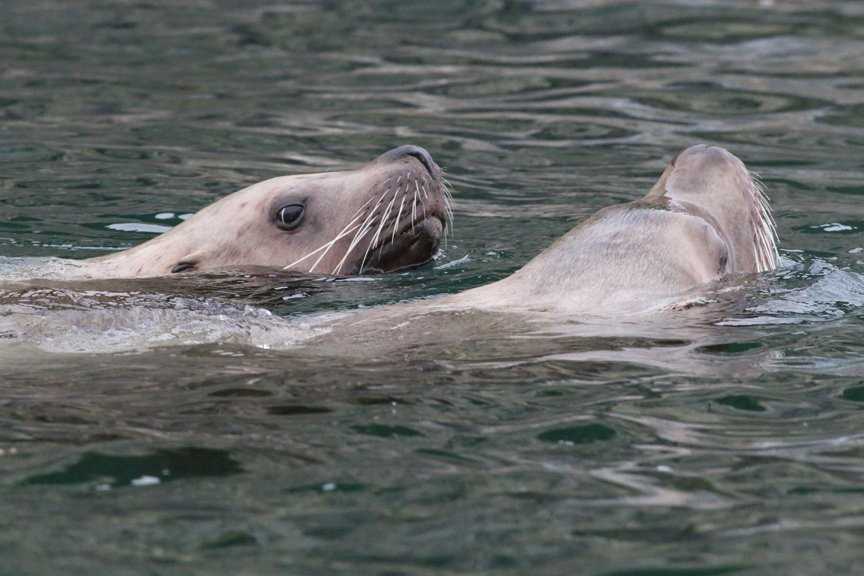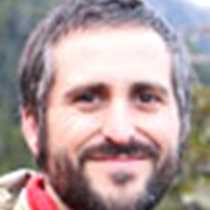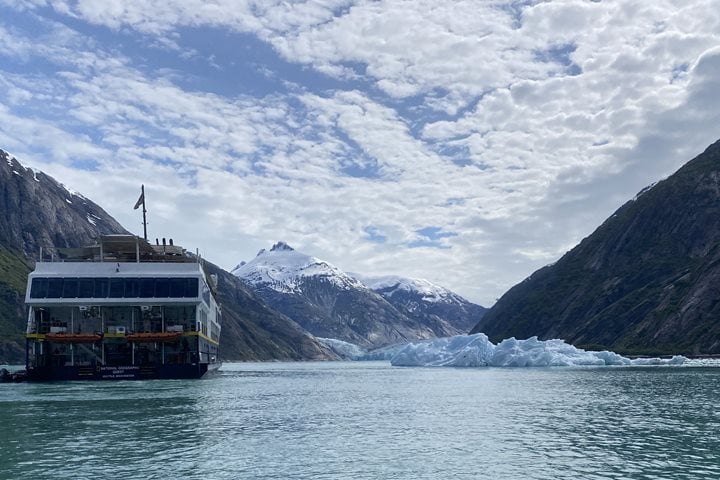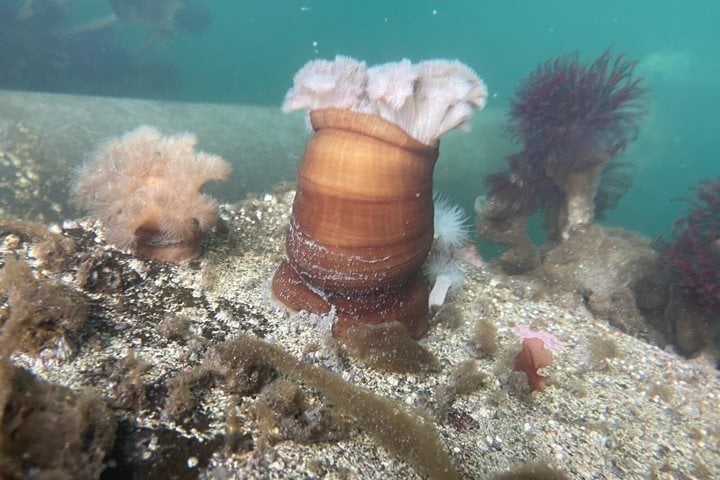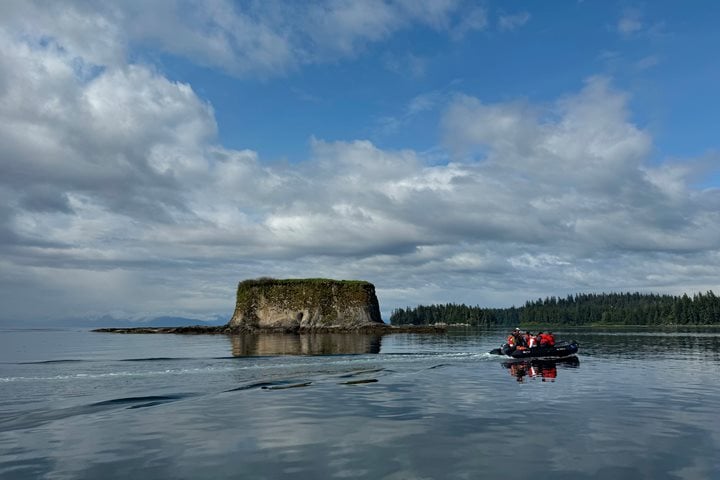Between the Gulf of Alaska and the northern reaches of the Inside Passage stand the precipitous, forested Inian Islands. Turbulent tidewaters rush past the islands, stirring up nutrients and fish from the ocean depths, which in turn attract eagles, seabirds, and marine mammals that come to feed. This morning, we explored “the Inians” from our expedition landing craft, gaining an intimate view of the dynamic oceanography and biology that makes them so special. Of all the wildlife that we observed, it was surely the Steller sea lions that were the most captivating. Many of these gregarious (and noisy!) pinnipeds were as curious about us as we were of them; they splashed beside our boats, raised their heads out of the water to get a better look at us, and nibbled on the metal rings that hung from our boats. A few even traveled with us, porpoising in our wake as we finally left to return to the ship.
In the afternoon, National Geographic Sea Bird repositioned to Fox Creek on Chichagof Island. Chichagof shares the distinction with nearby Admiralty and Baranof Islands of having the highest density of brown bears anywhere on the planet. Those who explored the island on foot found numerous signs that bears were indeed present. As is often the case when walking among Southeast Alaskan forests, fresh bear scat littered the trail; however, far more intriguing were the perennial bear tracks. For reasons not well understood, bears sometimes walk repeatedly–for days, months, even years–in the same foot prints, creating well-worn and obvious tracks. And sometimes, as here on the Fox Creek trail, these tracks lead to trees that reveal scratch marks and tufts of hair left by the bears as the animals dragged their claws and rubbed their backs on the bark. Were the bears alerting other bears to their presence? Does it feel good, as we imagined, to rub your back on the coarse bark? Or perhaps they were simply drawing our attention to the lovely wildflower meadow that lay in bloom just beyond the forest edge.
In the evening, our naturalist Emily had intended to give us a presentation on sea otters; however, she was interrupted by a group of humpback whales feeding around us. We all gathered on the bow to watch as the animals blew bubble-nets to corral prey near the surface. Everywhere we looked, spouts hung in the air and flukes slipped below the surface. With mountains in every direction and the sun casting yellow, then orange, then pink hues as it slowly set, it was a sublime way to send off another inspiring day in Southeast Alaska.

